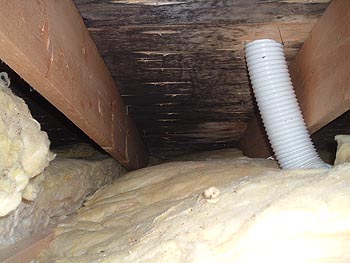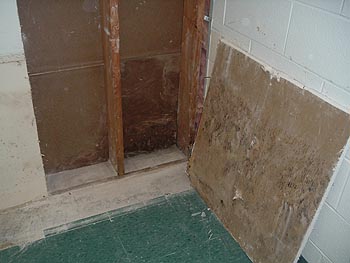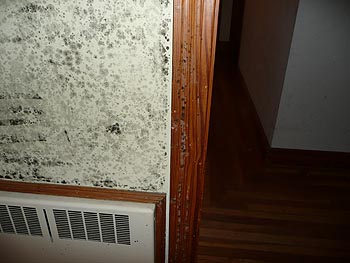Mold is naturally occurring and found everywhere. As a constituent in the ambient air, it is not usually problematic. When favorable moisture, temperature and oxygen conditions are present within an enclosed area (i.e., inside a building), however, mold growth may proliferate and cause health symptoms in some occupants. Mold growth within buildings is usually initiated by a water intrusion event (burst pipe, flooded Basement, etc.) or ongoing moisture intrusion (weeping through the foundation, damp crawlspace with a dirt floor, etc.).
When mold is present within a building in elevated levels, some occupants may experience certain health symptoms. These include compromises to the respiratory system, fatigue and memory loss. Health effects can be caused by airborne fungal spores as well as volatile organic compounds released by the mold organism.
If a mold problem is suspected, an initial investigation is the appropriate response. CPAI has performed over 500 initial mold investigations. The initial investigation always includes two distinct components. First, is an interview with the building owner and/or occupants to review health symptoms and medical complaints of affected parties (if any), determine historical perspective of health issues, determine chronology of events related to past moisture/water intrusion events (if any) and determine any other factors that may be relevant or helpful to the investigator. Second, is a physical investigation of the affected area(s). This involves a determination related to suspicious odors that could be caused by the presence of mold, and a visual inspection of building materials/surfaces for visible mold, staining, peeling, and other signs of water damage. During the physical investigation, Clay Point Associates, Inc. may utilize a moisture meter to determine moisture content in building materials, and a hygrometer to determine temperature and relative humidity.
In general, we believe that the presence of mold in a building or room indicates the presence of a potential mold problem. During the initial investigation, we prefer to avoid exploratory testing that may be expensive and generate irrelevant data. On rare occasions, however, clients require performance of certain testing activities. Physical sampling is utilized to confirm the presence of mold on building materials and/or room contents. This may include collection of a physical sample of the material/substrate, swab sampling of surfaces and/or collection of a tape lift sample from a substrate. There may also be circumstances that warrant collection of air samples during performance of the initial investigation. Analysis of all samples collected by Clay Point Associates, Inc. is performed by an independent analytical service accredited by the American Industrial Hygiene Association (AIHA) for environmental microbiology.
Upon completion of the initial site investigation, CPAI generates a report of findings and recommendations for improvement of indoor air quality relative to the presence of mold.
Relative to the presence of mold in rooms/buildings, it is instructive to clarify some general misunderstandings. Mold presents a potential health threat whether it is living (viable) or dead (non-viable). Therefore, utilization of substances that kill mold do not provide a sound approach to mold abatement (and may introduce additional problematic chemicals to the indoor environment). Instead, the proper abatement approach is physical removal of the mold. This may be as simple as cleaning mold from ceramic tile in your shower, and as complicated as dry ice blasting mold from the rafters and decking in your Attic. Mold cannot be removed from porous surfaces (ie, carpeting, sheet rock, ceiling tiles) or covered with paint or another building material. Porous materials must be physically removed and discarded.
If mold remediation is necessary, CPAI can design the indoor air quality improvement project and administer a competitive bid process with qualified environmental remediation specialists. The design document includes a description of the specific scope of work, specific work practices to be implemented and engineering controls to be used to protect other areas of the building from contamination.
As a rule, our costs associated with bid process administration are recovered by creating equal, competitive bidding conditions for remediation contractors. If you involve CPAI in the bidding process, you will receive fair pricing from remediation contractors. CPAI is not afffiliated with any contracting firm. Therefore, we provide objective services without any conflict of interest.
CPAI is also available to perform a clearance visual inspection and conduct air sample collection/analysis at the completion of a mold remediation project.
While no industry specific standards/regulations exist with respect to mold contamination in buildings, Clay Point Associates, Inc. performs initial investigations and remediation design activities in accordance with the U.S. Environmental Protection Agency guidelines, and




